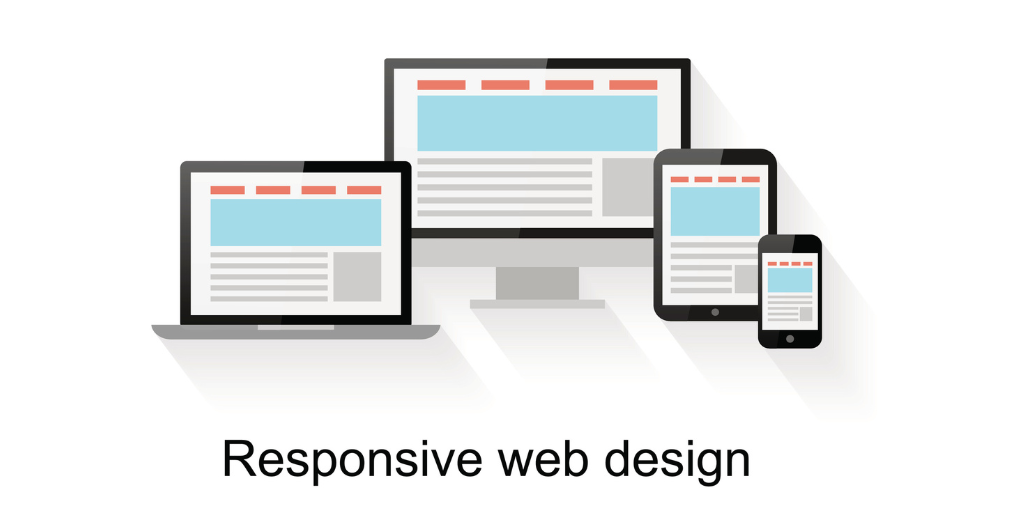Table of Content
- Important Aspects of Mobile Optimization
Responsive Web Design
Mobile-Optimized Navigation
Performance Optimization
Content Optimization - Mobile Optimization : How to get Started
Optimize Email for Mobile Usage
Develop Mobile-Centric, Appealing Experiences
Implement Mobile Messaging Techniques
Track Mobile Behavior
Test & Retest Mobile Tactics
Make Every Word Valuable - Conclusion
A lot of you have been reading this on your phones or tablets. If not, when was the last time you used your phone to browse the web while you were sitting on your sofa or in line? Chances are, it was not long ago.
If the page didn't look good, you probably wouldn't stay around for long. Instead, you should do your search again and click on the link below to find a website that is easier to use.
More than half of all internet traffic comes from phones and tablets, so if you don't make your website mobile-friendly, you could lose a lot of potential customers.
Tech experts will need to make websites that do more than just have a responsive design to create a mobile-first experience. Online stores that want to get more people to buy from them need to keep up with the changes in technology and make sure their sites work well on phones.
This blog post will talk about importance of mobile optimized website.
Related Information: Benefits of online presence for business
Important Aspects of Mobile Optimization
Just think about how much time and income people spend on their phones these days. Just like that, there are many reasons to start focusing on mobile optimization, but we've picked out the most important ones.
1. Responsive Web Design

The importance of mobile optimized website is Responsive Web Design . It supports the optimization of a website for mobile devices. Developing this typically faces higher expenses; however, it guarantees comprehensive mobile optimization for all elements of your website. This will lead to considerable long-term advantages.
However, this becomes more difficult if you operate an e-commerce website that is crowded with numerous products and services. It is crucial in this situation to select a completely responsive website design.
Responsive websites modify their appearance in response to the screen size of the user. The 'hamburger' menu is frequently displayed to users instead of the top bar, and images are reduced.
By providing fundamental factors, responsive design empowers one to develop a website that is entirely optimized for mobile use. Users will find your website visually appealing and navigable, which will contribute to an increase in conversions. To achieve the highest possible conversion rates, however, additional mobile optimization is required.
2. Mobile-Optimized Navigation
You need to know the difference between a site that works well on phones and one that is friendly to phones. A website that is mobile-friendly shows up correctly on smaller screens. It usually looks like a smaller version, but touchscreen tablets might not always work perfectly with it. But it should still be able to work.
A mobile-friendly site helps make sure that your site works on phones, but mobile optimization goes even further. A site that is mobile-friendly changes how it looks on phones.
In addition to making sure the site looks good on smaller screens, it also makes it much easier to get around. It changes the layout of the content, makes the navigation buttons bigger, and makes sure that images look their best on each screen size.
3. Performance Optimization
Your website needs to be mobile-friendly so that it loads quickly on phones. If your site doesn't load in about three seconds, most people will leave it. So, you can leave the speed at which a website page loads to chance, especially on phones.
Here are some common ways to make your mobile site faster:
- Avoiding pages with too many RTRs,
- Using compressed files
- Caching pages whenever possible
- Building Accelerated Mobile Pages (AMPs)
4. Content Optimization
The content of the site must also be optimized so that it looks great on mobile devices. Keep in mind that people's attention spans will probably be shorter on mobile devices than on bigger screens. This is because smaller text and less space make it harder to read for long periods.
Here are some tips for making mobile content work better:
- Think about how people usually look at and swipe on their phones when placing calls to action (CTAs).
- Don't write long content; not many people read on their phones (unless it's a tablet).
- No more pop-ups at all costs. Make sure all of the fonts and images are the right size.
- Every page should have a search box.
Mobile Optimization: How to Get Started?
This is how consumers act now: if a business doesn't plan its marketing for mobile, it's probably not reaching enough customers and losing sales.
Here are six mobile optimization strategies you can use to make your mobile marketing more effective if you think your company is behind the times when it comes to mobile:
1. Optimize Email for Mobile Usage
Email marketing on mobile devices is frequently overlooked by brands, despite its obvious transparency as a channel for marketers.
Marketers should make sure their emails are mobile-friendly. Whether it's a welcome email or a confirmation of purchase, customers expect emails to be easy to read and navigate on any device.
Suppose a customer views an email on a desktop computer and finds it useful; however, they wish to share a featured product with a friend but only have access to a mobile device.
Both prospective clients could lose interest and even more if they have a bad experience because the email isn't mobile-friendly. Make sure that no matter what device someone is using, every email can be seen and read.
2. Develop Mobile-Centric, Appealing Experiences
Mobile optimization and marketing plans need to be carefully put into action, or brands could lose customers. After all, marketers are calling customers on their cell phones, which are one of the most personal things they own.
All of these channels need to have highly personalized, interesting, and mobile-focused content that stays the same as the user moves from one interaction to the next.
In addition to making sure their website works on mobile devices, brands can personalize product suggestions and in-app messaging even more. As users interact with the app, personalized responses are automatically sent, which increases conversion rates and the number of active customers.
Brands must also make sure that their customer service and support is focused on mobile devices. Not only should there be Frequently Asked Questions (FAQs) and contact information, but the site should also be built to work well on a variety of screens. Customers do have short attention spans when they're on their phones, after all.
So, if they need to search or zoom in to get help, they'll probably just leave the app or close it altogether. Everything a customer does, from shopping to buying to getting help, needs to be mobile-friendly and easy to use.
3. Implement Mobile Messaging Techniques
Remember all the people you saw on their phones as you walked down the street or sat down in a coffee shop? A lot of them would probably be texting or SMSing when you saw them.
Texting is a way for more than 4.2 billion people around the world to talk to each other, and every day, billions of texts are sent. With this much use, marketers have a huge chance to reach their customers in one of the most powerful ways yet: smart SMS marketing.
When brands use mobile messaging as part of their marketing, they can reach their ideal customers even when they're not online. These text messages can be used with existing omnichannel strategies to give customers the most value, whether they are in or out of the app.
4. Track Mobile Behavior
Marketers need to understand the mobile habits and preferences of their target demographics to create the most effective mobile experiences. The most efficient method would be to collect data straight from the mobile device.
If you want to segment your audience and set up triggered events across all of your mobile channels, you need to keep track of app events, from installation to important interactions.
5. Test & Retest Mobile Tactics
Marketers need to optimize their mobile strategies based on the results of ongoing testing if they want to succeed in today's mobile-first world. A mobile strategy that was successful six months ago might not have the same effect or influence now due to how quickly things change.
Marketers can learn more about their customers' mobile device habits and the success of their mobile marketing campaigns with the help of tracking data, which provides real-time information.
6. Make Every Word Valuable
Just so you know, long-form reading isn't exactly suited for mobile phones. To enhance your writing, make use of visual content such as images, videos, and more. Keeping visitors interested in your site throughout the customer journey is essential.
Customers are increasingly establishing relationships with brands through mobile devices, whether it's through social media, app downloads, or mobile website visits. Every second that a visitor spends on your site is precious, so make the most of it. Speak to them directly, engage with them, and tell them what makes your brand unique.
Conclusion!

It should be obvious by now that you should focus on mobile optimization if you desire high conversion rates and good rankings. An SEO audit is a good place to start when you want to improve your mobile SEO.
Although it's reasonable to want to pack as much content and features as possible into a website, remember to prioritize the needs of your users.
Your product or service takes a hit when your website's mobile optimization is faulty. Changes that don't demand much effort can be implemented by following our tips and keeping an intuitive mindset.
If you want to succeed in business, you need to optimize for mobile.
Check our latest blog: Importance of a website in business







